Pavement Markings, Crosswalk Beacons Help Students Get Back to School
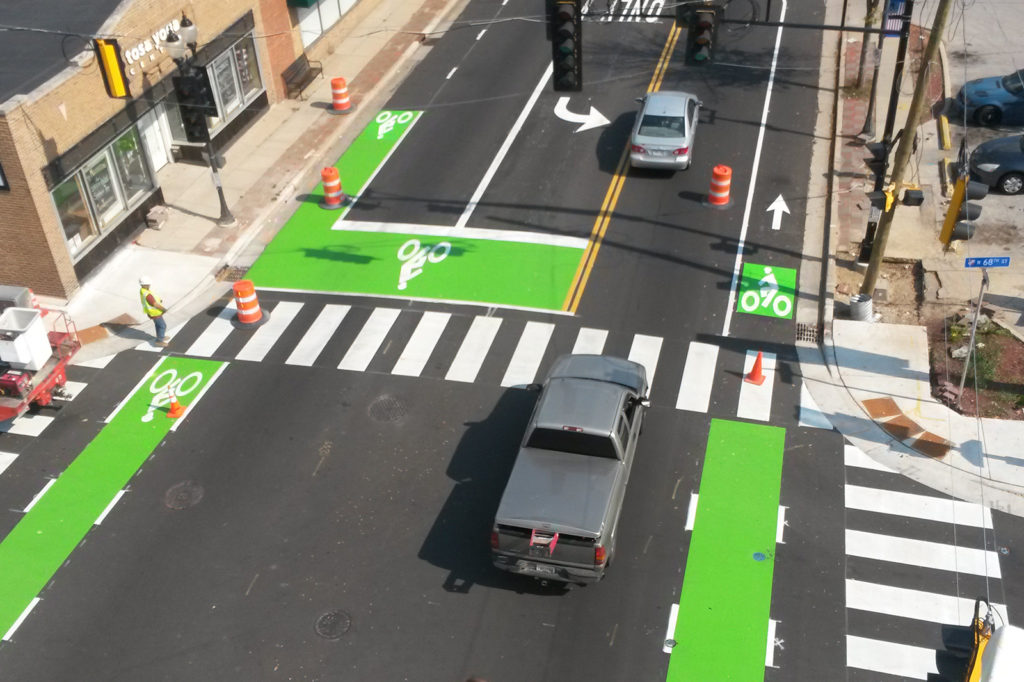
As students in many parts of the nation begin a new academic year, families face the question of how their children will safely reach school. If the commute is relatively short, a simple and healthy solution is for children to walk or bike to school. But what if the school is on the other side of a busy thoroughfare? Or what if the route to school involves biking down busy streets with no safe accommodations for two-wheel traffic?
Milwaukee suburb Wauwatosa is an example of a community that is committed to solving these issues to make nonmotorized travel – including to three of its schools – safer and more convenient. Our traffic analysts and engineers helped the City of Wauwatosa with recently finished projects, indicated in yellow on the accompanying map, that make crossing Wauwatosa Avenue easier near Lincoln Elementary School and Wauwatosa East High School. The projects also make it safer to bike along an approximately 16-block stretch of busy North Avenue west of Longfellow Middle School and the eight-block stretch of Wauwatosa Avenue that connects all three of these schools between North Avenue and Milwaukee Avenue. Ayres had previously designed bike lanes for the 16 blocks east of Longfellow Middle School, indicated in green on the accompanying map, and the latest project provided comparable lanes to the west and south of Longfellow.
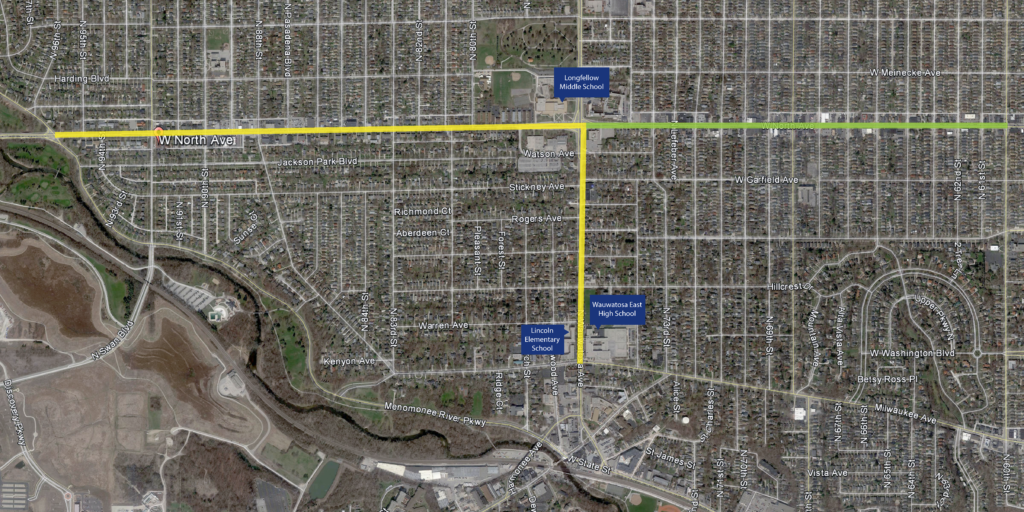
Common Back to School Safety Techniques
This project and the previously completed one through the commercial district to the east of Longfellow considered and/or implemented many of the most commonly used bike and pedestrian accommodations available to municipalities:
- Bike lanes marked on pavement, including some green-painted sections of bike lane.
- Green bike boxes designed to allow bicyclists to go to the front of the line where traffic is queued at a traffic signal. Bike boxes were implemented at North Avenue and 68th Street as part of an earlier project we completed for the City.
- Sharrows, which are pavement markings that remind drivers that they are sharing their lane with bicyclists.
- Bike routes, which are stretches of street where pavement markings for bikers are not possible because of the narrowness of the street. Green signs mark the route as one where drivers should remember to watch for bikes and allow them to share the roadway.
- Pedestrian-activated rectangular rapid flash beacons (RRFB) at pedestrian crossings to call attention to people crossing near schools and other busy areas. The lights’ wig-wag flashing pattern gets noticed. These are different from Hawk signals, which turn to a yellow and then red light at a pedestrian crossing to provide an enforceable stoppage of traffic to allow walkers to cross.
- Continental and ladder crosswalk pavement markings, whose broad white bars running perpendicular to pedestrian flow in a crosswalk also command attention from motorists.
- Bumpouts in which the road narrows at a crosswalk to reduce the crossing distance for pedestrians.
Crosswalk, Lanes Give School-Bound Students Confidence
While Wauwatosa Avenue is posted at 30 miles per hour and has school crossing guards during peak school travel times, the street’s heavy traffic can make it difficult to cross the street at times. The City decided to install RRFBs to call extra attention to pedestrians attempting to cross at Warren Avenue, just in time for the fall semester to begin at Lincoln Elementary on one side of the crossing and Wauwatosa East on the other. Based on personal observations, the system seems to be getting drivers to stop for pedestrians.
The City will install additional RRFBs and construct bumpouts at the intersection of 83rd Street and North Avenue to draw attention to pedestrians crossing this intersection.
To similarly raise drivers’ awareness of bicyclists sharing the street, bike lanes were added to North Avenue between Wauwatosa Avenue and Swan Avenue and on Wauwatosa Avenue between North Avenue and Milwaukee Avenue. Because the streets are relatively wide, it was possible to retain existing parking lanes and 11-foot traffic lanes while placing a 5-foot-wide bike lane in between. (Bike lanes are a minimum of 4 feet wide, and the minimum motor vehicle lane width is 11 feet.) The bike lane provides official stature and visibility to bicyclists on the street, in contrast to the confusion and ambiguity of having bikers weaving left and right as they alternately hug the curb and negotiate around parked cars.
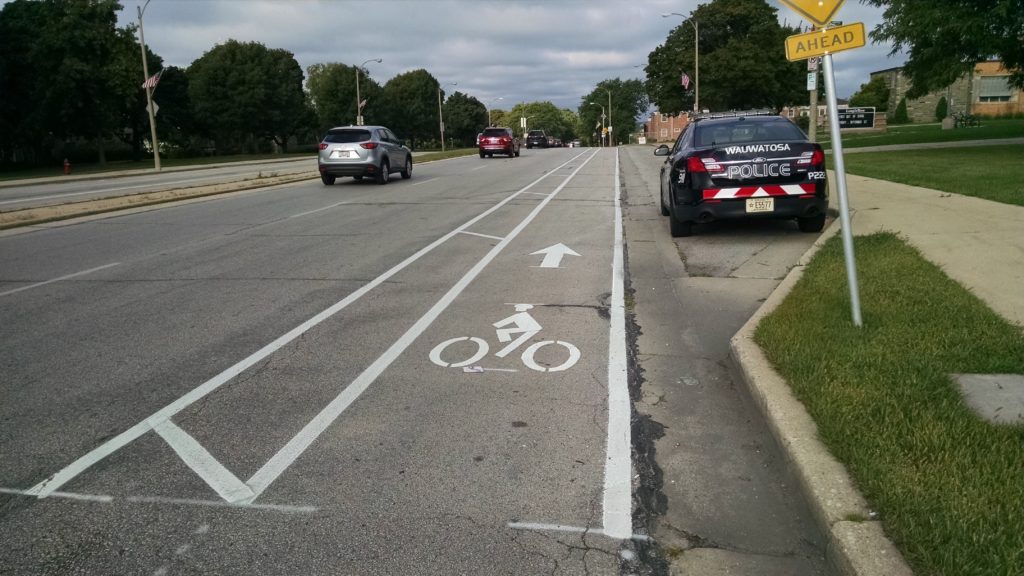
In the area around Longfellow Middle School, where parents drop off students along the curb on North Avenue, we even designed a diagonally striped buffer zone adjacent to the bike lane to make it even clearer to drivers swinging into the loading/unloading zone that they are crossing over and then parking next to a bike lane.
Where the width of North Avenue was not 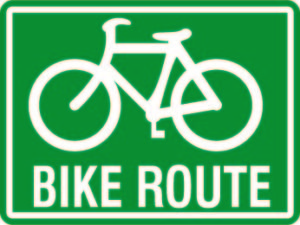 great enough to add a bike lane between Swan Boulevard and Menomonee River Parkway, our designers originally hoped to mark the street with sharrows to emphasize the shared use of the road by bikes and motor vehicles. But it was ultimately determined that the most the road would accommodate was posting the stretch with green “Bike Route” signs.
great enough to add a bike lane between Swan Boulevard and Menomonee River Parkway, our designers originally hoped to mark the street with sharrows to emphasize the shared use of the road by bikes and motor vehicles. But it was ultimately determined that the most the road would accommodate was posting the stretch with green “Bike Route” signs.
Success Through Collaboration
One key to the success of our projects in Wauwatosa has been the level of engagement among City staff and residents. Because our staff thoroughly hashed out the desired results of the project through the original study with the very active Bike and Pedestrian Committee, our experts and the committee were able to support each other through the public meeting process, helping to build public support for the improvements.
It’s also important to point out that safety improvement projects can be accomplished to fit into narrow time frames and tight budgets. The City has long-term goals for the reconstruction of North Avenue, but we were able to provide them with a cost-effective interim solution that provides the desired bicycle and pedestrian solutions now. With project kickoff in June and completion needed before the early September start of classes for these three schools, our staff collaborated with the City in a “design-build” fashion to make sure the project was designed, built, and open to the public before schools were back in session.
Looking for more information? Reach out to any of our traffic engineering experts!

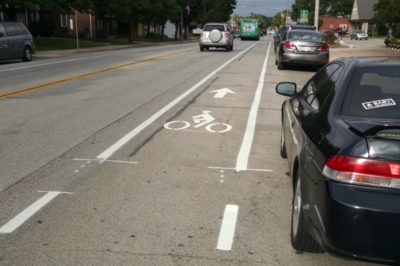
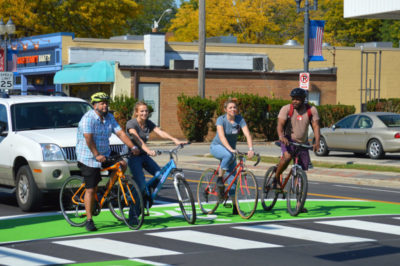
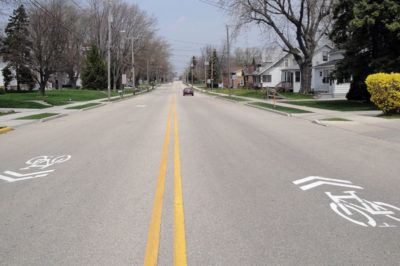
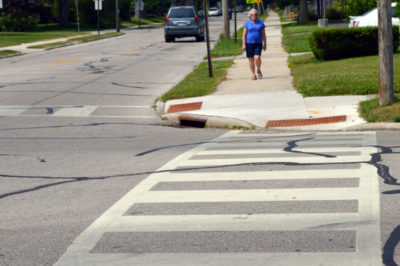
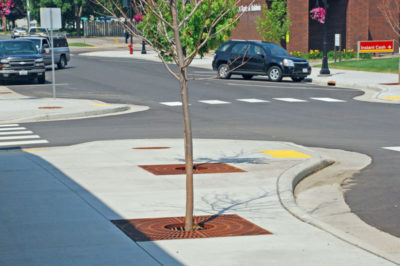
Post a comment: